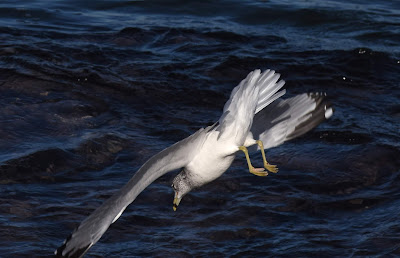A series on birds at Halibut Point with diverse
adaptations
to finding food below the water surface:
Dabblers, Plungers, Divers, and Pursuers.
 |
Buffleheads, male and
female
|
The text for this article comes from the sportsmen's organization Ducks Unlimited. *
 |
Bufflehead, diving
|
 |
Bufflehead diving and
Harlequin observing
|
 |
Harlequin Ducks
|
 |
Harlequin male, diving
and female, snorkeling
|
 |
Goldeneye, male and
female
|
 |
Goldeneye diving
|
 |
Common Eiders
|
 |
Common Eider
|
 |
Harlequin Duck drakes
|
* The
text in this article is taken from "Diving Ducks: Into the Deep," by John M.
Coluccy and Heather Shaw, as published on the Ducks Unlimited website www.ducks.org.
























